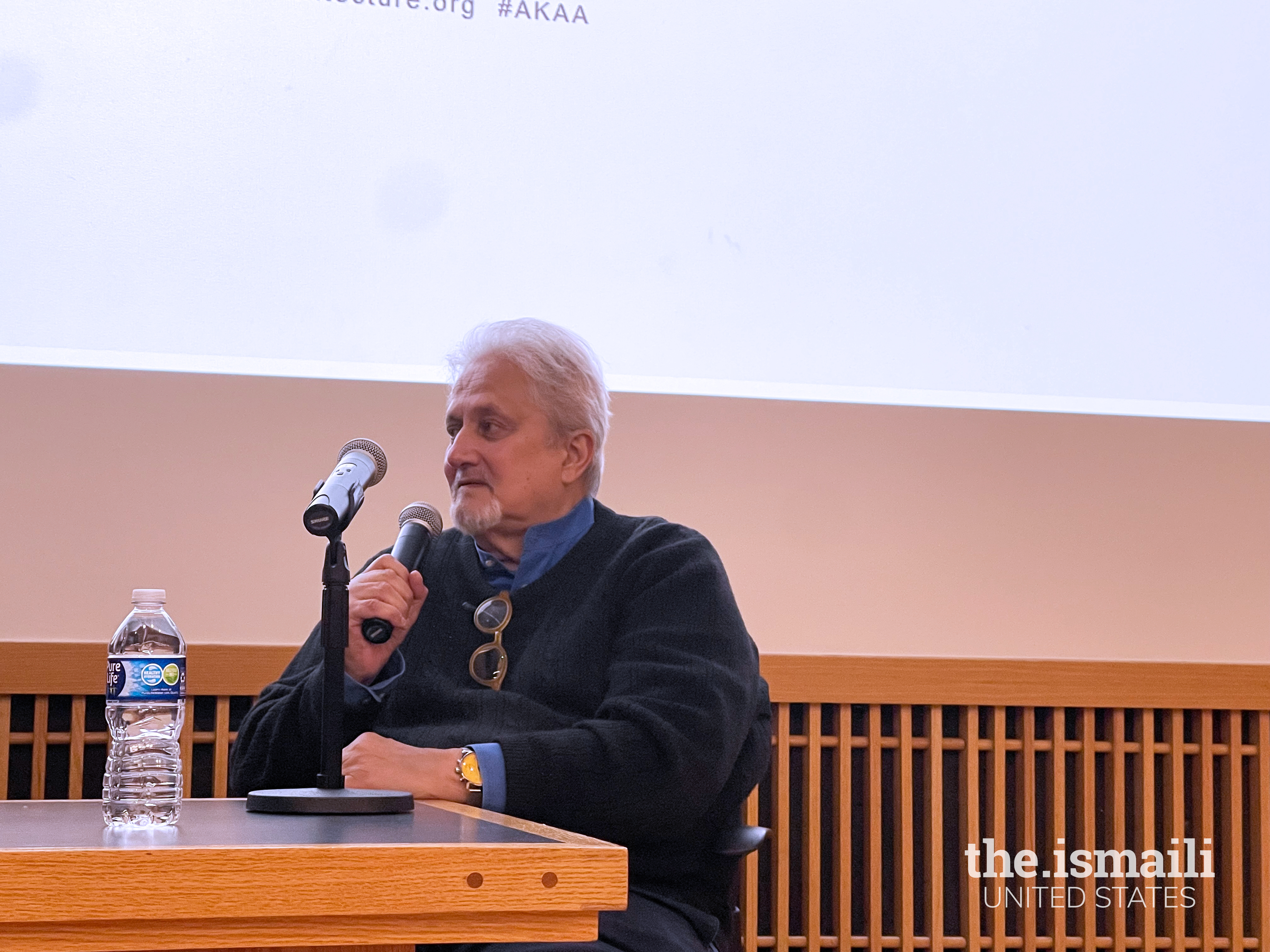The University of Maryland (UMD) School of Architecture, Planning, and Preservation hosted a panel discussion and exhibition on the Aga Khan Award for Architecture on Friday, October 20, 2023, at its campus. The event was co-sponsored by both the International Journal of Islamic Architecture and the Aga Khan Award for Architecture.
Image 7113

The Kibel Gallery played host to an exhibition showcasing the 2022 Aga Khan Award for Architecture recipients, featuring projects from Bangladesh, Indonesia, Iran, Lebanon, and Senegal that demonstrated promises for communities, innovation, and care for the environment. Every project had a dedicated team of architects discussing the project right from its ideation to the finish.
The panel discussion took place as a hybrid event, with both in-person and Zoom participation, involving enthusiastic engagement from students, alumni, and members of the Jamat.
The panel included Farrokh Derakhshani, Director of the Aga Khan Award for Architecture, Nasser Rabbat, Director of the Aga Khan Program for Islamic Architecture at MIT, alongside Hassan-Uddin Khan, Professor Emeritus, Preservation of Architecture and Historic Preservation at Roger Williams University.
Derakhshani focused on the field of contemporary built environments. His work has connected him with architects, builders, and planners from around the globe. During his presentation, he discussed his project in Iran and emphasized the significance of contemporary architecture in Muslim societies.
Additionally, Derrakhshani shed light on the Aga Khan Development Network and the importance of the Aga Khan Award for Architecture within Muslim societies. His association with the award dates back to 1982. “Architecture is one of the very few disciplines that touches all levels of society; it has an impact on your daily life,” he said.
Addressing UMD's aspiring students, Farrokh Derakhshani emphasized, “Let me put it in a historical perspective. Today, young people think that you can immediately jump on something and have all the information about it at any moment. Forty-five years ago, that was not the case. Someone in Morocco had no idea what was happening in Indonesia. So one of the main roles of the Award was to tell people that someone else has found an intelligent solution that you can learn from.”
Image 7112

I
Professor Nasser Rabbat discussed the concept of architecture as a “humanist empire" that draws inspiration from a wide range of geographies. “Interacting with culture and society,” he suggested, is “informative and descriptive, often striking an emotional note."
Hassan-Uddin Khan played a pivotal role in the establishment of the Aga Khan Award for Architecture in 1977. He shared his research on contemporary architecture, mosque buildings, and low-income urban development in Asia, with a particular emphasis on the residents of Pakistan. “Islamic architecture is seen in the Ottoman-style minarets of the King Faisal Mosque; Islamabad provides a new dimension to the urban landscape.”\
Princess Zahra Aga Khan noted, at the 2022 Award ceremony in Muscat, Oman: “The projects and the people we honor show how architecture that is truly global can also be deeply local. They show us how architecture can create dialogue among people, build bridges between communities, and act as places of sanctuary for those in need.”
The 2022 six award-winning projects include:
Urban River Space, Jhenaidah, Bangladesh
Involving the local workforce, women, and marginalized groups, the project cleaned up access to the Nabaganga River in Jhenaidah. The initiative resulted in a minimal landscaping project that used local materials to convert an abandoned informal dump site into an attractive and accessible multifunctional space.
Community Spaces in Rohingya Refugee Response, Cox’s Bazar, Bangladesh
The concept and design of the six temporary community spaces are the result of appropriate planning, strong partnerships, and the active involvement of diverse refugees and host communities. The program addressed the urgent needs of Rohingya refugees, particularly women and girls, with a dignified, sensitive, and innovative approach.
Banyuwangi International Airport, Blimbingsari, East Java, Indonesia
The Banyuwangi International Airport is both modern and efficient and blends well with its surroundings. It marks a turning point in airport architecture, especially since the Indonesian government plans to build around 300 airports in the near future. Arising from a sea of paddy fields, the building extends the landscape with its design, purpose, and location.
Argo Contemporary Art Museum and Cultural Centre, Tehran, Iran
In Tehran’s historical center, the conservation project has transformed the Argo Factory, which was a former ruined brewery building, into a renovated private contemporary art museum that was relocated outside the city due to pollution. The ruined building that was relocated outside the city due to pollution underwent renovation with a subtle approach and design. This resulted in spaces for exhibitions, talks, and films across four levels, with artist residency construction next to the museum.
Renovation of Niemeyer Guest House, Tripoli, Lebanon
At a time of political, socio-economic, and environmental crisis around the world, particularly in Lebanon, the renovation of the Niemeyer Guest House is an inspiring tale of architecture’s ability to rejuvenate. Situated on the outskirts of Tripoli, the historic port city renowned for its craft, now ravaged by poverty, migration, and a lack of public space, the rehabilitation of the Guest House is part of the Rachid Karami International Fair (RKIF), which is the unfinished masterpiece designed by Oscar Niemeyer.
Kamanar Secondary School, Thionck Essyl, Senegal
The Kamanar Secondary School campus addresses urban planning, landscape design, and building technologies. The site topography and vegetation, which were paramount for the project, resulted in a grid of classroom pods arranged under tree canopies, creating a shaded social space for students and teachers.
For additional information, please visit Aga Khan Awards Discussion and Gallery Exhibition Opening click here.









